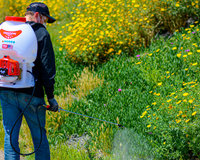As more pet parents turn toward holistic and chemical-free lifestyles, natural flea and tick treatments have grown in popularity. But with so many oils, sprays, collars, and powders on the market, one big question remains:
Do natural flea and tick treatments actually work?
The answer is yes—with the right approach. Natural treatments can be an effective way to protect your pets and home, especially when used consistently and as part of a larger prevention plan. Here’s what you need to know about how they work, when they work best, and how to choose the right option for your pet.
How Natural Flea and Tick Treatments Work
Unlike traditional chemical products, which usually kill pests by disrupting their nervous system, natural treatments work by:
-
Repelling fleas and ticks through strong scents or oils
-
Disrupting the pest’s life cycle
-
Drying out or deterring larvae and eggs (in the case of substances like diatomaceous earth)
Some common natural ingredients include:
-
Cedarwood oil – repels fleas, ticks, and mosquitoes
-
Neem oil – anti-parasitic and antibacterial
-
Apple cider vinegar – alters skin pH, making pets less attractive to fleas
-
Lemongrass, peppermint, and eucalyptus oils – natural repellents
-
Diatomaceous earth (food grade) – dehydrates and kills insects on contact
Pros of Natural Treatments
✅ Chemical-free and often safer for pets with sensitive skin or allergies
✅ Eco-friendly and safe for kids and households
✅ Can be used frequently without harsh side effects
✅ Good for mild infestations and prevention
Limitations of Natural Flea and Tick Treatments
❌ Don’t always kill pests instantly – Many natural products repel rather than kill
❌ May need to be reapplied frequently – Some wear off quickly
❌ Less effective in severe infestations – May not break the full flea life cycle
❌ Some pets may be sensitive to certain essential oils – Always spot-test first
When Natural Treatments Work Best
-
As a preventative measure – Use them before flea and tick season starts
-
In combination with grooming – Regular brushing and bathing help boost effectiveness
-
Alongside environmental control – Keep your yard treated, vacuum frequently, and wash bedding often
-
With a consistent routine – Daily sprays or weekly baths can be key
Natural Products That Pet Owners Love
🟢 Cedar Oil Yard Sprays – Safe for pets, kills fleas/ticks on contact
🟢 Natural Flea & Tick Collars – Infused with plant oils, lasts for weeks
🟢 Diatomaceous Earth – Non-toxic powder for bedding and carpets
🟢 Essential Oil Sprays – Blend of oils like rosemary, peppermint, and citronella
Tip: Look for products labeled vet-approved, non-toxic, and made specifically for pets—never use human-grade essential oils on animals without checking with your vet.
Yes—natural flea and tick treatments do work, especially when used early, often, and as part of a multi-step plan that includes environmental control and regular grooming. While they may not deliver instant results like some chemical treatments, they offer a gentler, safer solution for many households.
If you’re dealing with a severe infestation, natural options might not be strong enough alone—but for prevention and maintenance, they’re a great tool in your pest-fighting toolkit.









